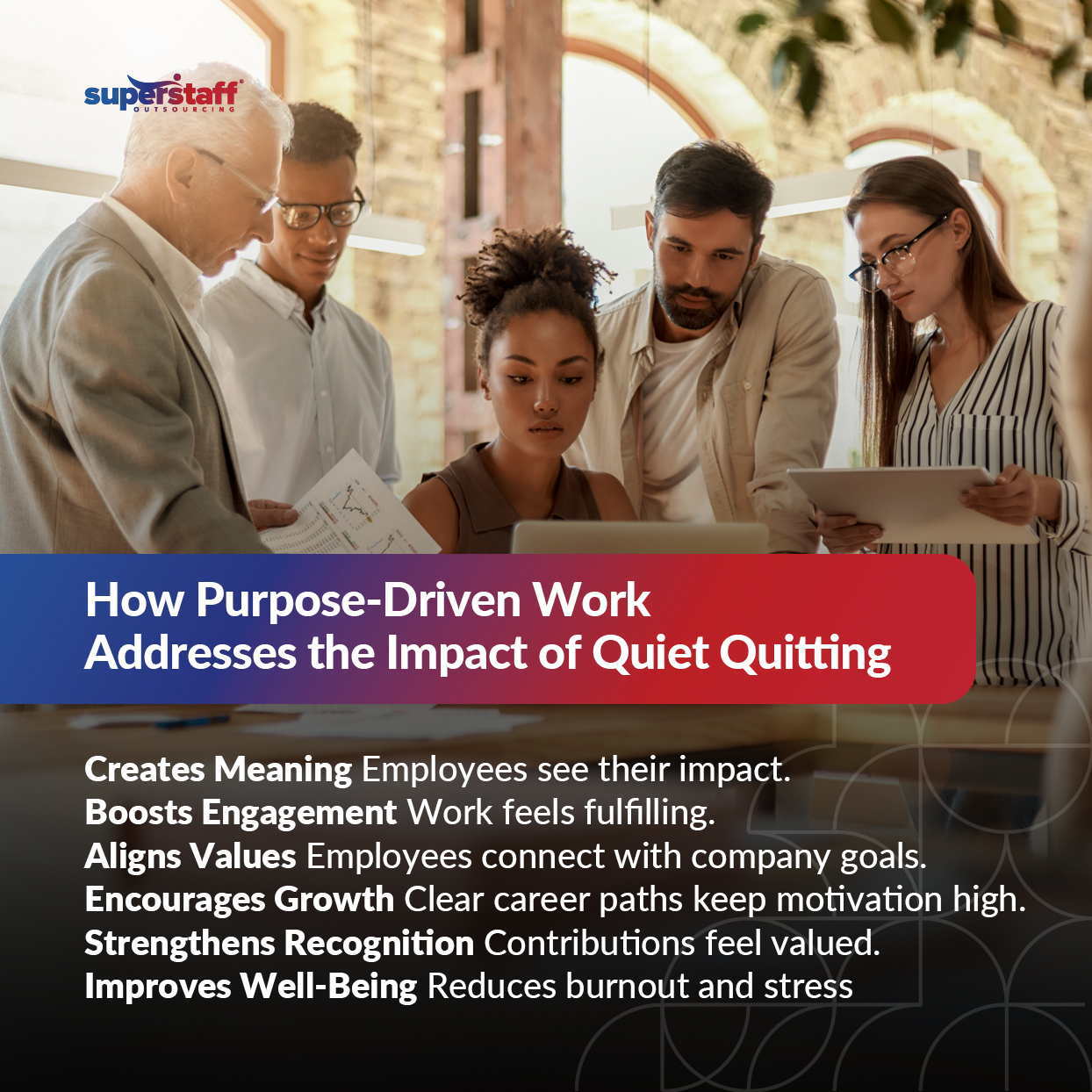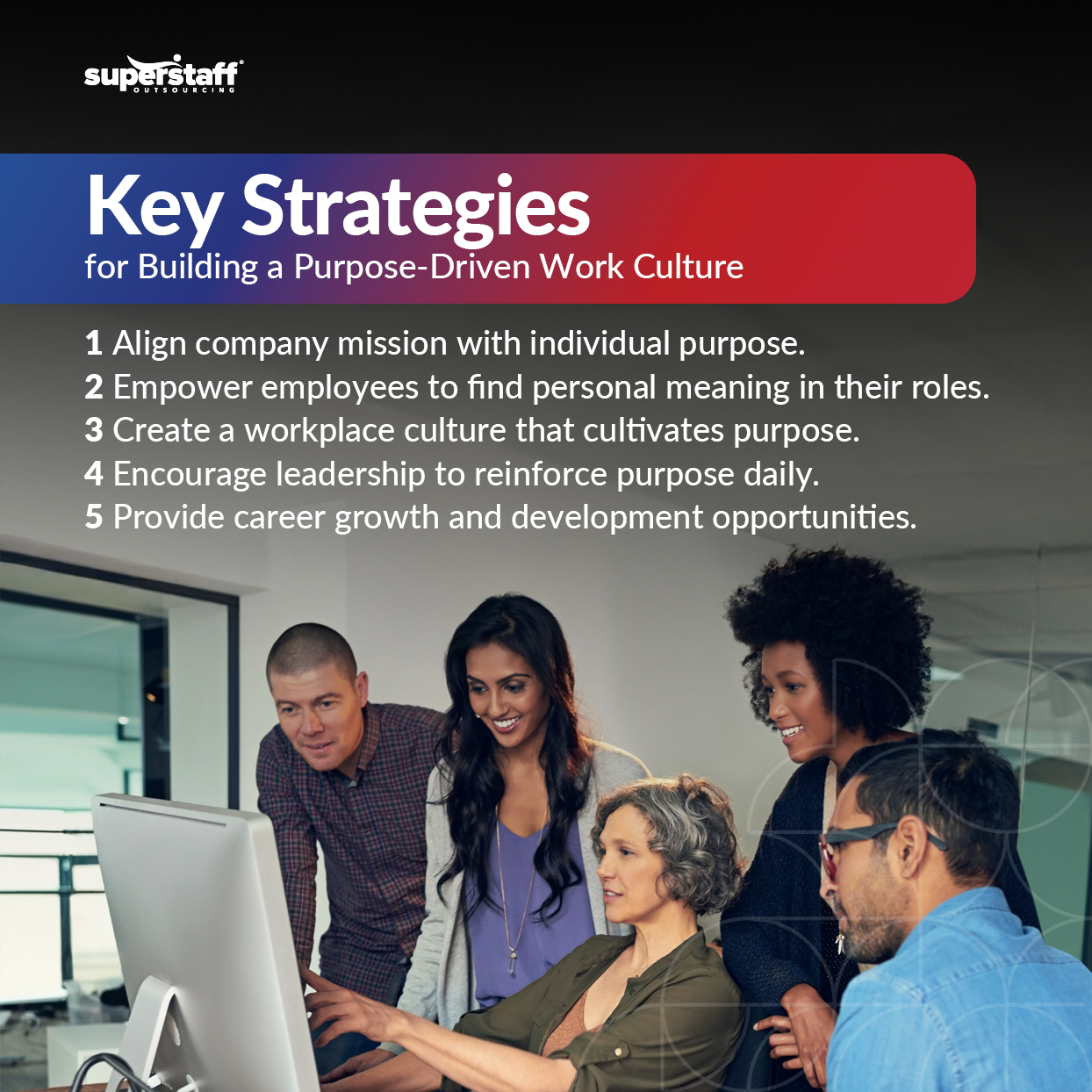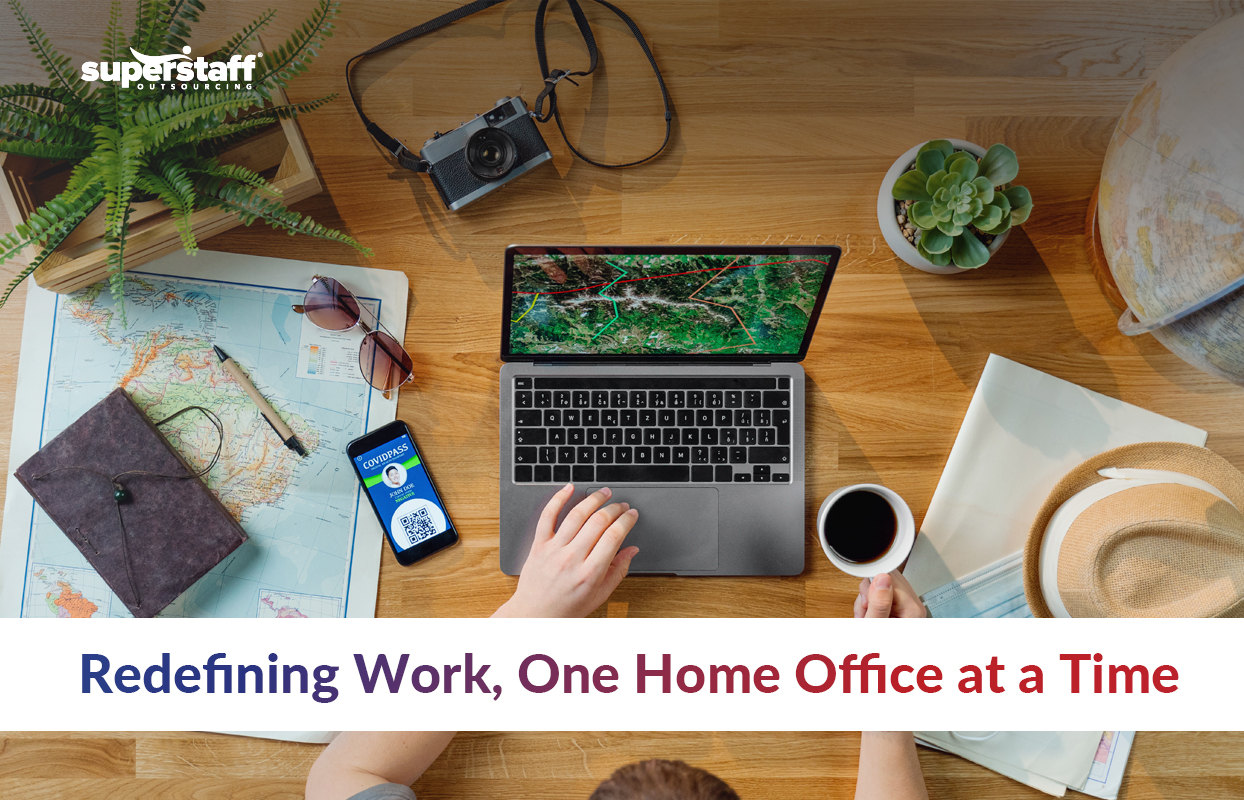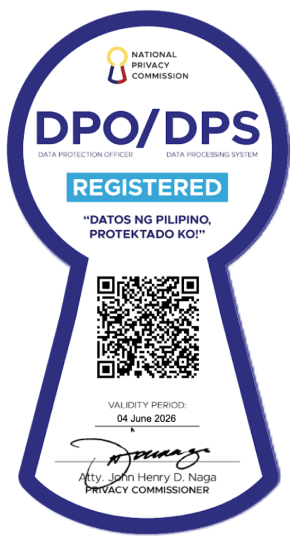
There’s a new workplace dilemma that no amount of salary bumps or perks can fix: Employees are showing up and completing tasks but mentally checking out. This silent disengagement—better known as quiet quitting—is on the rise. Workers are no longer willing to go above and beyond, often because they feel undervalued, burnt out, or disconnected from the bigger picture.
While traditional incentives may keep employees on the payroll, they don’t necessarily ignite passion or commitment. The real solution lies in something deeper: purpose-driven work. When employees see meaning in their work, they’re more engaged, motivated, and willing to invest their energy into the organization’s success.
This article explores how companies can combat quiet quitting by fostering a culture of purpose. From aligning roles with employees’ values to creating a work environment where contributions genuinely matter, we’ll uncover why purpose is the key to long-term job satisfaction—and how it can transform disengaged workers into dedicated team members.
Understanding Quiet Quitting and Its Impact
Quiet quitting isn’t about employees walking out the door—it’s about them mentally checking out while staying on the job. The financial impact of this phenomenon is staggering. According to Gallup, disengaged employees cost the global economy $8.8 trillion annually in lost productivity, making quiet quitting one of the biggest silent threats to business success.
However, it’s essential to distinguish quiet quitting from a healthy work-life balance. The latter involves setting boundaries to maintain well-being and sustain long-term performance, while quiet quitting stems from a deeper issue: a lack of motivation, purpose, or recognition at work. Employees who embrace work-life balance still find meaning in their roles; those who quietly quit feel detached and uninvested.
The challenge for leaders isn’t to push workers beyond their limits but to reignite engagement by connecting the company mission to employee fulfillment. Employees who see how their work contributes to a larger purpose feel valued, motivated, and more invested in their roles. Creating an environment where people want to contribute—not just clock in and out—helps transform disengagement into long-term commitment.
Common Reasons for Quiet Quitting
Quiet quitting doesn’t happen overnight—it builds up over time due to unresolved frustrations and unmet expectations. Some of the most common reasons employees disengage include:
- Lack of Recognition: When hard work goes unnoticed, employees feel unappreciated and unmotivated to go beyond the bare minimum.
- Unclear Career Growth: Without a clear path to advancement, employees struggle to see a future within the company, leading to stagnation and disengagement.
- Misalignment with Company Values: Employees who don’t resonate with their company’s mission or leadership decisions may feel disconnected from their work, reducing their sense of purpose and investment.
Addressing these issues isn’t just about boosting morale—it’s about preventing the slow erosion of engagement that leads to quiet quitting.
Signs of Quiet Quitting in an Organization
Quiet quitting isn’t always easy to spot, but subtle behavioral and performance-related changes indicate disengagement. Some key signs include:
- Minimal Effort: Employees complete tasks but avoid taking initiative or contributing beyond their basic responsibilities.
- Decline in Communication: Reduced participation in meetings, lack of enthusiasm, and slower response times suggest a disengaged mindset.
- Resistance to Collaboration: A once-engaged team member who now avoids teamwork, skips social interactions, or withdraws from company culture may be quietly quitting.
- Drop in Productivity or Quality of Work: Employees doing just enough to meet expectations without showing creativity or problem-solving initiative may be mentally checking out.
Recognizing these signs early allows leaders to address the root causes and re-engage employees before quiet quitting turns into actual turnover.

How Purpose-Driven Work Prevents Quiet Quitting
Purpose-driven work is a powerful antidote to quiet quitting because it shifts employees from feeling like cogs in a machine to being key contributors to a meaningful mission. When employees understand how their daily efforts connect to a larger purpose, they are more engaged, motivated, and willing to go beyond the bare minimum.
Employees who feel their work serves a purpose are likelier to stay with their company, reducing turnover and the hidden costs of disengagement. Companies that emphasize a strong mission statement don’t just inspire their workforce—they create a culture of belonging and fulfillment. When employees feel their work has an impact, job satisfaction rises, productivity improves, and quiet quitting becomes far less likely.
The Psychological Impact of Meaningful Work on Motivation
When employees find meaning in their work, their motivation shifts from external rewards to intrinsic fulfillment. Psychological studies show that people are more engaged and productive when they believe their contributions make a difference. Meaningful work triggers a sense of accomplishment, autonomy, and purpose, fueling long-term motivation.
Instead of simply completing tasks for a paycheck, employees who see the bigger picture develop a stronger sense of ownership and pride in their roles. This deeper engagement enhances performance and reduces feelings of stagnation and dissatisfaction, often leading to quiet quitting.
How Purpose Fosters Loyalty and Reduces Burnout
A strong sense of purpose not only makes work more fulfilling but also strengthens employee loyalty and resilience. Employees who feel connected to their company’s mission are more likely to stay committed, even during challenging times.
Purpose also enhances emotional well-being, providing a sense of direction that prevents workplace exhaustion. Implementing employee engagement strategies that align individual roles with a larger mission can further reinforce this connection. By fostering a mission-driven culture and integrating engagement initiatives, organizations can create an environment where employees feel valued, motivated, and less susceptible to the pressures that typically lead to disengagement and turnover.
5 Key Strategies To Increase Employee Motivation Through Purpose
Companies can increase employee engagement and motivation by aligning roles with a clear mission, recognizing contributions, and fostering a culture where employees see their impact. Providing growth opportunities, encouraging meaningful collaboration, and reinforcing purpose in daily work can transform disengaged employees into committed team members. Here’s how:

#1: Align Company Mission With Individual Purpose
For purpose-driven work to be effective, organizations must align their corporate mission with what matters to employees. When individuals see how their roles contribute to a larger purpose, they feel more motivated, engaged, and committed. Here’s how companies can close the gap between business objectives and employee fulfillment:
Define a Clear and Inspiring Company Mission
- A strong mission statement should go beyond profit-driven goals and emphasize the company’s broader impact on customers, society, or industry innovation.
- Employees connect more with missions that resonate with their values and personal aspirations.
Ensure Employees See Themselves in the Mission
- Communicate how each role contributes to the company’s success.
- Showcase real stories of employees making an impact within the organization.
Connect Daily Work to a Larger Purpose
- Reinforce how everyday tasks contribute to meaningful outcomes.
- Encourage employees to reflect on how their work aligns with their personal goals and values.
By making the company’s mission relevant to individual employees, organizations can create a culture of engagement where people feel motivated by more than just a paycheck.
#2: Empower Employees To Find Personal Meaning in Their Roles
Beyond aligning company missions with individual goals, employees also need autonomy in shaping their own purpose. When employees see their work as more than just a list of tasks, they become more engaged, motivated, and committed to their organization’s success. Empowering employees to shape their roles, take initiative, and connect with meaningful projects fosters a more profound sense of purpose in their daily work.
Encouraging Ownership and Impact
- Employees are more invested when they have control over their work and can see its direct impact on the company’s mission.
- Giving employees the autonomy to make decisions, problem-solve, and innovate within their roles leads to higher engagement and satisfaction.
Job Crafting: Shaping Roles for Greater Meaning
- Companies that allow job crafting—where employees have the flexibility to adjust responsibilities based on their strengths and interests—see higher levels of motivation and productivity.
- Job crafting can include modifying tasks, improving work relationships, or finding new ways to align personal passions with business goals.
Fostering Initiative and Innovation
- Encouraging employees to propose new ideas, lead projects, or improve processes helps them feel more connected to their work.
- Companies that support employee-led initiatives create a culture of trust and empowerment, leading to greater job fulfillment.
Examples of Companies Supporting Job Autonomy and Employee-Led Projects
- Google: Implements its famous “20% time” policy, allowing employees to dedicate time to passion projects, leading to innovations like Gmail and Google Maps.
- 3M: Encourages employees to spend 15% of their time on independent projects, fostering creativity and breakthrough innovations.
- Atlassian: Hosts “ShipIt Days,” where employees work on self-chosen projects that improve the company or its products.
The Role of Passion Projects and Cross-Functional Initiatives
- Employees who engage in passion projects within their organization often develop a stronger connection to their work and company mission.
- Cross-functional collaborations expose employees to new skills, perspectives, and career paths, making their roles feel more dynamic and fulfilling.
Companies can cultivate a culture where people find personal fulfillment in their roles by allowing employees to shape their work, take initiative, and engage in meaningful projects. This will reduce disengagement and strengthen long-term commitment.
#3: Create a Workplace Culture That Reinforces Purpose
A purpose-driven culture isn’t just about the individual—it requires a community-driven approach. Employees who feel connected to their work and the company’s mission are more engaged, productive, and likely to stay. A supportive and purpose-driven work culture prevents disengagement and fosters long-term fulfillment. Here’s how organizations can cultivate a culture that reinforces purpose:
Prioritize Employee Well-Being and Shared Values
- Companies that support work-life balance, mental health, and personal development create an environment where employees feel valued.
- Aligning workplace values with employee aspirations fosters a sense of belonging and reduces turnover.
Recognize and Celebrate Contributions
- Regular acknowledgment of employees’ efforts—through formal awards, shout-outs, or simple appreciation—reinforces their impact on the company’s mission.
- Purpose-driven recognition programs, such as those that tie achievements to the company’s broader goals, help employees see their contributions as meaningful.
Build a Feedback-Driven Culture
- Employees are more engaged when they know their opinions matter. Providing regular opportunities for feedback—through surveys, one-on-one meetings, or open forums—helps them feel heard.
- Acting on employee feedback strengthens trust and reinforces that their contributions shape the company’s future.
Encourage Collaboration and Purpose-Driven Teamwork
- Creating opportunities for cross-functional collaboration allows employees to see how their work fits into the bigger picture.
- Purpose-driven teamwork fosters a sense of shared accomplishment and strengthens commitment to company goals.
By cultivating a workplace culture that consistently reinforces purpose, organizations can drive deeper engagement, inspire long-term commitment, and build a team passionate about making a difference.
#4: Encourage Leadership to Reinforce Purpose Daily
While culture is essential, leadership plays a crucial role in enhancing employee experience. A purpose-driven workplace starts at the top. Leaders play a critical role in shaping an environment where employees feel connected to a larger mission, engaged in their work, and motivated to contribute beyond their daily tasks. When leaders lead with vision, empathy, and transparency, they set the foundation for a workplace culture that thrives on purpose.
Leading with Vision and Empathy
- Employees look to their leaders for direction, inspiration, and clarity. Leaders who articulate a clear vision and genuinely care for their teams foster a stronger sense of purpose.
- Purpose-oriented leadership can increase employee engagement. When people see the impact of their work, they are more likely to invest in it.
Transparent Communication to Foster Alignment
- Employees feel more engaged when they understand how their work fits into the company’s bigger picture.
- Regular updates on company goals, challenges, and successes help employees align their efforts with the organization’s mission.
- Leaders who openly discuss the “why” behind decisions build trust and reinforce a sense of shared purpose.
Creating Personal Connections with Teams
- Purpose isn’t just about business outcomes—it’s also about people. Leaders who take the time to understand their employees’ aspirations, motivations, and challenges foster stronger engagement.
- Small actions, such as personalized feedback, mentorship, and open-door policies, show employees they are valued contributors to the organization’s success.
Using Storytelling to Reinforce Mission and Values
- Stories have the power to make company values feel real and relatable. Leaders who share real-life examples of how the company’s mission impacts customers, employees, or the community help bring purpose to life.
- Highlighting employee success stories and company milestones reinforces why the work matters and inspires teams.
Leaders can create an environment where employees feel valued, aligned, and motivated to contribute by setting the tone for a purpose-driven culture. This will ultimately drive higher engagement, satisfaction, and long-term success.
#5: Provide Career Growth and Development Opportunities
While leadership and culture matter, companies must invest in long-term career growth opportunities. Employees are more engaged when they see a clear path for growth within their organization.
Without opportunities for advancement, they may feel stagnant, leading to disengagement and quiet quitting. To retain top talent and sustain motivation, companies must develop employee engagement strategies that empower workers to learn, grow, and take on new challenges.
Creating a Clear Career Progression Path
- Employees need to know what’s next for them within the company. Transparent career pathways help employees set goals and stay motivated.
- Regular career discussions between employees and managers ensure that individuals see their future within the organization.
Combatting Career Stagnation
- Lack of professional growth is one of the biggest drivers of disengagement. Motivation declines when employees feel stuck in repetitive roles with no new challenges.
- Companies that actively encourage professional growth prevent stagnation and foster long-term commitment.
Offering Mentorship and Upskilling Programs
- Companies with structured mentorship programs see higher retention rates because employees feel supported in their career journeys.
- Upskilling initiatives, such as leadership training, technical skill development, and industry certifications, help employees expand their expertise and stay engaged.
Investing in Learning and Development Initiatives
- Access to workshops, online courses, and professional development programs ensures that employees continue to grow within their roles.
- A learning-focused culture shows employees that the company values their long-term potential, not just their current contributions.
Providing Stretch Assignments and Leadership Opportunities
- Encouraging employees to take on stretch assignments—challenging projects outside their usual responsibilities—keeps the work dynamic and engaging.
- Offering leadership development programs, cross-functional collaborations, and internal promotions helps employees see a future within the company.
By prioritizing career growth, companies create an environment where employees feel challenged, valued, and motivated to stay engaged. A strong commitment to learning and development not only reduces quiet quitting but also fosters a workforce that continuously evolves and contributes to long-term business success.
Join a Workplace Where Purpose-Driven Work Fuels Success and Satisfaction
Quiet quitting isn’t just about employees doing less—it’s a symptom of disengagement that can be reversed with the right approach. A purpose-driven workplace fosters motivation, fulfillment, and long-term commitment by ensuring employees see the impact of their work. Organizations that intentionally align company goals with individual purpose, invest in career growth, and create a culture of recognition can transform disengagement into dedication.
At SuperStaff, we believe people thrive when they feel valued and inspired. If you’re looking for a workplace where your contributions truly matter, join SuperStaff, a people-centered BPO company that prioritizes professional growth, collaboration, and meaningful work. Your purpose starts here—apply today!






